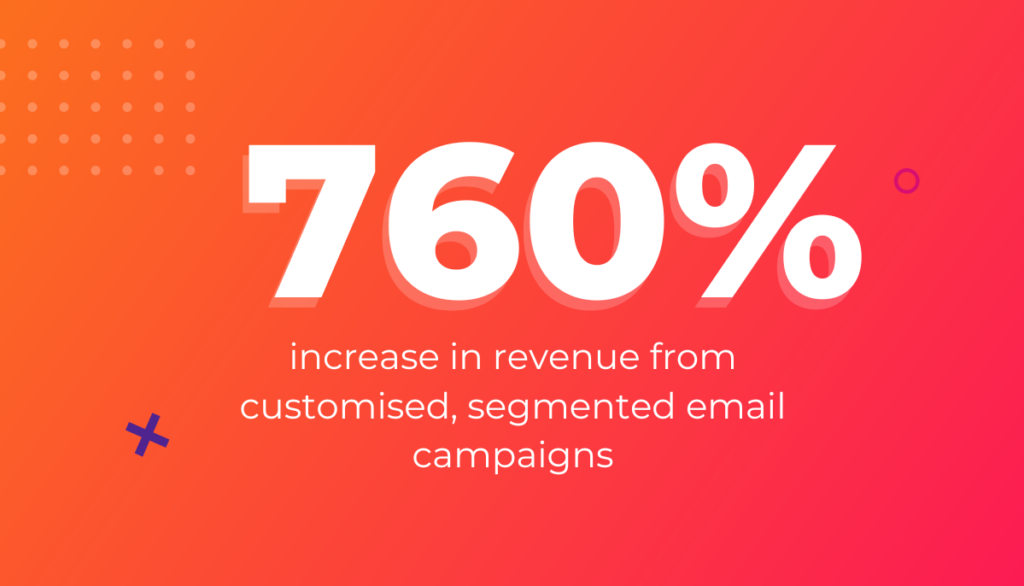
Exciting News! Outbase unveils its groundbreaking AI Assistant – your new campaign creation co-pilot. It's a smarter, faster way to reach your sales goals!


In an ideal world, you’d have the resources and time to cater to every individual need of your prospects but that’s just unrealistic.
Market segmentation could be the answer.
It lets you match-make your customers’ needs with your brand’s capabilities. Yes, it requires a significant degree of time and effort, but when done properly, it will help you maximise your resources for the best results.
Want to find out how? Keep reading.
Without segmentation, it becomes very hard to construct a viable marketing strategy. If you don’t know who you’re targeting, there is no way of guaranteeing the sufficient number of sales necessary for survival. That might sound dramatic but market segmentation is key to a successful business.
Through grouping target customers by their common attributes, you will be able to tailor and personalise messages for each segment. This should result in higher conversion rates aka more sales.
Marketers see an average of 760% increase in revenue from customized, segmented email campaigns (if that statistic doesn’t convince you, we don’t know what will).

FedEx experienced a staggering 433% B2B sales increase following hard investment in their segmentation strategy. This involved improving their database systems, profiling their target markets and segmenting them based on location and industry factors, which ultimately allowed them to target areas and companies with deeper understanding.
If you don’t already have an Ideal Customer Profile (ICP), this is where it will really come in handy. An ICP is a fictitious customer or company which embodies all of the qualities that make them the most fitting prospect for you. When segmenting your market, you should be utilising your ICP to compare and check who are the strongest matches. Those who don’t match your ICP are unlikely to be a profitable segment which makes it easier to narrow down who’s relevant.
Find out more in our blog: Buyer Personas and Ideal Customer Profiles.
There are lots of different ways to segment your audience so how do you work out which one is right for you? Let’s take a look at the different methods:
While we have customer demographics in B2C markets, in B2B markets we have customer firmographics.
This is essentially grouping customers together based on their shared company attributes, making it a popular method for marketers as this is easily collectable data. Firmographics are composed of qualities such as:
However, as this information is so readily available, firmographics do not provide any way of giving you a competitive advantage and it is a segmentation model that any competitor can copy. Even though its simplicity may make it sound like the most attractive option, think carefully about what you really want out of your market segmentation.
This is a method of segmenting your customers based on how well they match your business goals.
It is common now for businesses who use the tiered approach to adopt an Account-Based Marketing (ABM) strategy. ABM allocates the majority of sales and marketing activities to those customers who are the best match for the company and are deemed to be the most profitable. It focuses on maximising profitability for a small, yet high-potential group of customers.
Tiered segmentation is also valuable for optimising your current customer base rather than new customers. Skillful marketers will know to take advantage of existing customer data to unlock the potential value of current customers. From this, they will be able to calculate the lifetime value of customers to determine who they should prioritise.
Needs-based segmentation does what it says on the tin. It’s the grouping of customers based on what they are looking for from your brand.
This is probably the most precise method in matching customers to your offering. This approach is also scalable as you can create as many needs-based segments as you feel is feasible for you to pursue.
Say, for example, you are a B2B SasS company specialising in sales prospecting and someone approaches you from a blog on lead nurturing, it is likely that this is what they need a solution for. And, because you have this information, you know what additional content to push in their direction to help them progress down the sales funnel.
Customer needs aren’t always so easy to define, so if you adopt this method you’ll need to put in the time to get to know your customers and what their needs and goals are.
Customer sophistication segmentation is similar to segmenting by needs, but is more refined and even more targeted. It deals with focusing on the customer’s existing awareness of their pain point(s), rather than just their general business needs.
Here, you can skip explaining what your solution does and cut straight to how your solution sets you apart from competitors.
Behavioural segmentation involves assessing how your customers interact with your solution e.g. your product or service. This helps you to determine if they would benefit from expanding their current solution aka taking on other products or services by you, and if they are at risk of churning.
This method works in tandem with tiered segmentation, and is not as effective when used alone. If the customer is at risk of churning, then you must try and retain them by improving the health of their product usage. If they have potential to benefit from expanding their current solution, then you can influence them to buy more.
With the majority of these methods, it is vital that you stray away from making too many broad assumptions about each company in their groups as where something might be true for one company, it may not be true for another.
For example, when segmenting by firmographics, you shouldn’t just assume that because two companies are of similar size and location that they will benefit from your solution in the exact same way. The same could be said for tiered segmentation, where just because a couple of companies fall within the same tier, they won’t necessarily succumb to the same marketing and sales outreach techniques.
The key to successful B2B segmentation is an expansive database. Databases should include at the bare minimum:
A sufficient database should also include the contact and names of the key decision makers in the company or team, which should be updated regularly when any changes are made.
It is essential to have a sufficient database in order to create your ICP in the first place as this mainly consists of firmographic and behavioural qualities. So without good existing information on your current customers, you are already making segmentation extremely difficult for yourself. Prior to segmentation, ensure that you have filled in any white space in your data!
If you are missing data, or your data needs updating, you can carry out both quantitative and qualitative research. Data derived from quantitative research of your customers is likely to provide you with firmographic information whereas qualitative interviews will fill in the gaps of behavioural and needs-based information.
With all this data at the ready, you will now be able to segment each customer based on their common attributes, using the segmentation strategies shared above.
Once segmented, you can go the extra mile and build buyer personas for each segment. These are semi-fictional depictions of your ideal customers to bring your segments to life (we also discussed personas in the same blog as our guide to ICPs).
Market segmentation is a crucial initial step in the sales and marketing process, skip it out and all your sales efforts will equate to taking a shot in the dark… at a target that is 100 metres away… while blindfolded.
We understand the degree of time and effort that must go into segmenting marketing and then constructing different campaigns for each one, so that is why we would like to take some of this stress out of your hands.
Outbase allows you to send out multiple campaigns to each of your segments, so you may have one email campaign for one segment emphasising one side of your solution, and another campaign which emphasises a slightly different take on the same solution to cater for a different market segment. Within the email templates, you use the personalisation filters to match customer or client firmographics to make something that feels 121.
Sounds good? Sign up for free today.